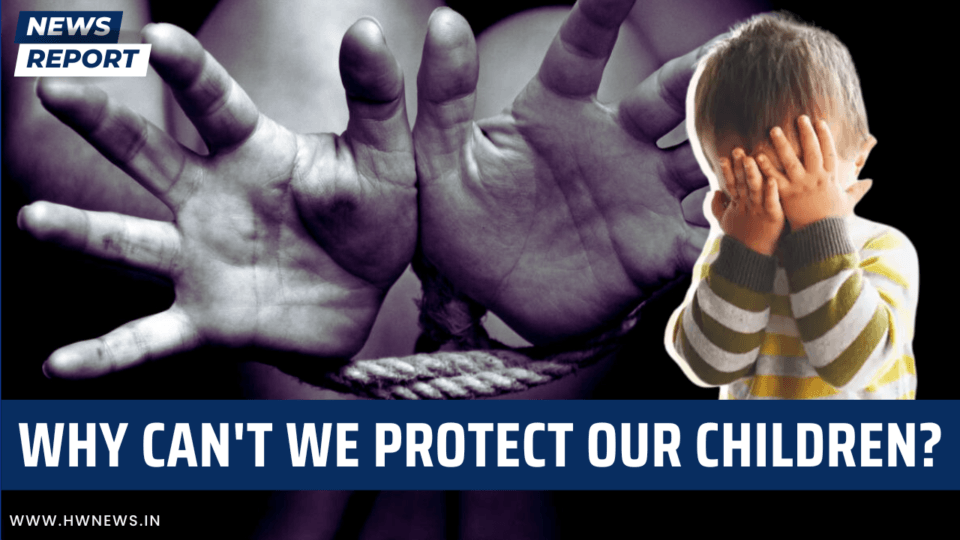India, as a country, aims to be a superpower. However, recent incidents in Manipur have shown that we have failed to protect our women. Today, I will be discussing how we are also falling short in safeguarding our children. So, how can we aspire to dominate the world when we are unable to protect the women and children within our own households? Child trafficking is a reprehensible and monstrous act that exacts a heavy toll on innocent children, robbing them of their innocence and freedom. According to NCRB reports in India, one child disappears every eight minutes, with sexual exploitation being a prevalent motive for trafficking. This crime is not limited to girls; boys are equally vulnerable and tragically used for cruel purposes. The National Crime Records Bureau recorded 2,834 child trafficking cases in 2018, 2,914 in 2019, and 2,222 in 2020. Shockingly, out of the 4,700 trafficked individuals in 2020, 1,377 were minor boys and 845 were minor girls. These figures only represent registered cases, and numerous instances likely remain unreported, leaving many victims unrecognized and still missing. The most vulnerable targets of this crime are small children in their pre-teen and adolescent years. Reports indicate that 80% of rescued children were between 13 and 18 years old, 13% were aged 9 to 12, and over 2% were even younger than 9 years old. Minor girls between 15 and 18 years old are particularly at risk, with high demand in the sex trade industry and domestic labor. On July 30, 2023, “”World Day against Trafficking in Persons”” saw the release of a report titled “”Child Trafficking in India: Insights from Situational Data Analysis and the Need for Tech-Driven Intervention Strategies”” by Games24*7 and the Kailash Satyarthi Children’s Foundation (KSCF). The report exposed a significant increase in child trafficking since the post-COVID period, with Uttar Pradesh, Bihar, and Andhra Pradesh topping the list for reporting the highest number of trafficked children between 2016 and 2022. Rajasthan’s capital, Jaipur, emerged as the primary destination for trafficked children over the past six years. During 2016-2022, KSCF managed to rescue a total of 13,549 children. Two districts in the national capital, North Delhi (5.24%) and Northwest Delhi (5.13%), ranked next in terms of the percentage of total rescues. Overall, five districts in the national capital were among the top 10 districts for rescues. The COVID pandemic dealt a severe blow to the trafficking situation in the country. Uttar Pradesh reported the highest number of trafficked children per year, with an average of 267 in the pre-COVID phase (2016–19) and a staggering 1,214 in the post-COVID phase (2021–22), representing an alarming increase of over 350%. In 2021, the state reported 2,055 cases of child trafficking. Bihar and Andhra Pradesh followed as the second and third leading states, respectively, where the maximum number of children were trafficked on average each year. Karnataka witnessed a significant increase in the number of trafficked children per year, from six cases before COVID to 110 after it, an 18-fold increase. Frequent interventions by the central and state governments, along with law enforcement agencies such as the Railway Protection Force and Border Security Force, have aided in curtailing the number of trafficked children and improving the reporting of such cases. Several root causes of child trafficking in India are poverty, lack of education, and the need to financially support their families. The country’s unemployment rate is alarmingly high, with the United Nations Development Programme estimating it at 3.5%. Scarce financial opportunities often lead to the exploitation of children when they are offered work. Those living in poverty are frequently compelled to trade sex for necessities like shelter and food. In dire circumstances, some desperate parents are even forced to sell their children to traffickers. Children are often coerced and manipulated by gangs, leaving them begging on the streets. Fortunately, laws and provisions are in place to protect children from trafficking. Article 23 of the Constitution of India explicitly prohibits human trafficking. The Government of India has enacted additional laws and made amendments to the Indian Penal Code (IPC) to effectively combat child trafficking.
#ChildProtection #Manipur #ChildTrafficking #NCRB #India #UttarPradesh #Bihar #AndhraPradesh #HumanTrafficking #Trafficking #Crime #HWNews
As an independent media platform, we do not take advertisements from governments and corporate houses. It is you, our readers, who have supported us on our journey to do honest and unbiased journalism. Please contribute, so that we can continue to do the same in future.

